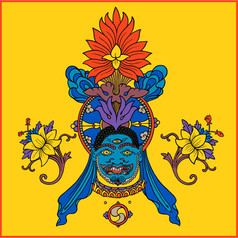Creative IP
- @admin

- Jun 19, 2020
- 2 min read

The Cultural and Creative Industries (CCIs) have become a significant part of the global
economy. Their output value is rising over time, and they account for increasing job
creation. It is estimated that CCIs employ approximately 30 million people across the
world.
CCIs face several challenges. First, a high degree of precariousness of employment and
informality, in both developed and emerging economies. Due to the often precarious
nature of jobs in the sector, ‘creative workers’ often hold multiple jobs to secure against
employment instability.
In the UK, creative industries were the fastest growing part of the economy pre Covid19, responible for over 2M jobs and accounting for almost 12% of the country services export.They are defined by the UK government as “those industries which have their origin in individual creativity, skill and talent and which have a potential for wealth and job creation through the generation and exploitation of Intellectual Property.
source: Creative industries federation.
Key sectors:
Advertising and marketing
Architecture
Crafts
Design: product, graphic and fashion design
Film, TV, video, radio and photography
IT, software and computer services
Publishing
Museums, galleries and libraries
Music, performing and visual arts
Other sectors such as video games are a combination of those mentioned above.
For individuals working in the creative sectors, the most relevant IP rights are:
Copyright
Trade marks
Design rights
Patents
Confidentiality agreements
IP rights provide great benefits to businesses and individuals in the creative sectors such as licensing and merchandising. These type of deals generate billions of dollars annually around the globe and often represent the main revenue strategies for many creative projects.
Copyright is the first line of defence and protects original work from being copied; it' therefore a priority to ensure protection early on in the lifecycle of the project.
What is worth copying is worth protecting; and such protection can only be given once the work is in a fixed medium, either in an physical or digital form.
A piece of work or project may qualify for one or more rights, and understanding the difference between each right will enable a better overall protection.
In the case of commisioned work or project, a contract is often used to tranfer the rights from the author to the client in exchange for fees.
It also always recommended to utilise non disclosure agreements when discussing or sharing sensitive information related to a creative process, project or work.
stock image WiX & Unsplash
We support Creative IP
At SIP Management we understand and stand by creatives; hence our platform and community support the IP needs of indidividuals and businesses within these industries.
A solid first line of defence. Early and ongoing protection for your copyright through our IP vault enables you to create a quick an efficient proof of authorship or creation. A necessary tool to protect yourelf against IP theft in an ever digital world.
Efficient service discovery. Easily find all the IP related services you need on our niche marketplace.
Secure Collaboration. Engage and collaborate with others through the Forum and Member's area.
We set to build a platform that empowers creatives; join our community and start making the most of your intellectual property (IP).
If you are an IP service specialist you can now join our unique network of sevice providers.
Get in touch: info@sipmanagement.co.uk












Comments